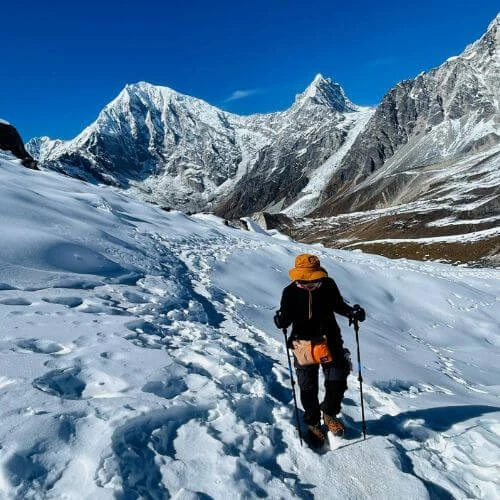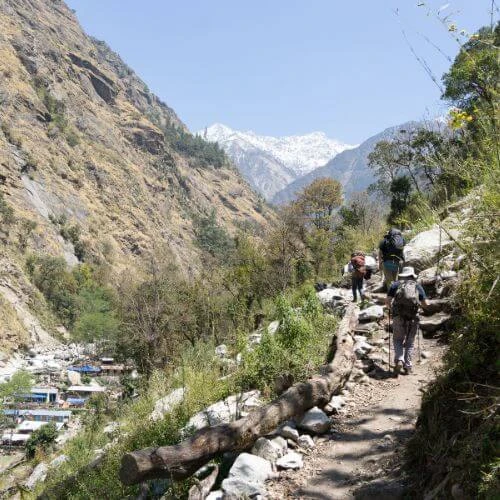Preparing for the Annapurna Circuit Trek Preparation is an exciting step, but it can feel overwhelming. You need to plan for high altitude, long distances, changing weather, and essential gear. Proper preparation will help you stay safe, enjoy the trek, and tackle every challenge with confidence.
This guide will help you understand the route, train effectively, pack wisely, manage altitude, and organize permits and costs. If you want a detailed experience, check out our complete Annapurna Circuit Trek package for all skill levels.
Understanding the Annapurna Circuit Trek
Knowing exactly what the trek involves is the first step in Annapurna Circuit Trek preparation. This section gives a clear picture of the Annapurna Circuit trek length, challenges, and highlights so you can plan your training, packing, and schedule effectively.
What the Annapurna Circuit Includes
- Route length: 160 - 230 km, depending on side trips and variations, giving flexibility to choose your challenge level.
- Trek length: Usually 14 to 21 days; some longer routes include extra trips like Tilicho Lake or Ice Lake.
- Walking each day: About 5 to 7 hours; taking rest days helps you not get too tired.
- Route options: Picking the normal circuit or longer routes changes your schedule and how fit you need to be.
Key Challenges to Expect
- High altitude: Thorong La Pass is 5,416 m high, so you need time to get used to it.
- Long walking days: Walking every day can be really tiring.
- Changing weather: It can go from warm valleys to cold passes; be ready for snow, rain, or sudden cold.
- Mental strength: Walking for many days in a row tests your patience and focus.
Major Highlights
- Thorong La Pass: The highest point gives amazing views and a great feeling of achievement.
- Culture: Traditional Gurung and Tibetan villages along the way show what local life is like.
- Scenery: Terraced fields, river valleys, and big mountains make the trek really beautiful.
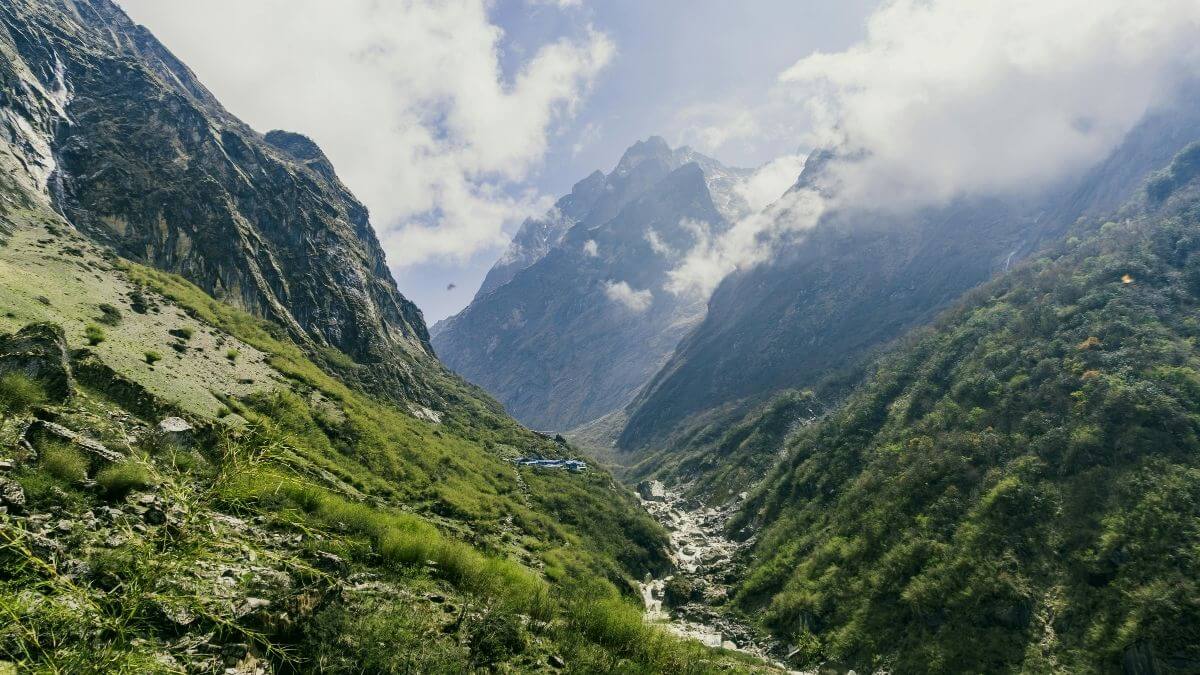
Understanding the trek helps you plan your Annapurna Circuit Trek Nepal adventure efficiently.
Physical Training for the Annapurna Circuit
Being fit is really important for getting ready for the Annapurna Circuit Trek. Training helps you build stamina, strength, and confidence so you can handle long walks, steep climbs, and high places safely.
Fitness Level Required
- Endurance: Being able to walk 5–7 hours a day without getting super tired.
- Strength: Strong legs and core help with long climbs up and down.
- Consistency: Trekking for many days means keeping your energy up every day.
Training Timeline
- Annapurna Circuit Trek Preparation period: Ideally, 3 months before the trek.
- Weekly structure: Combine cardio, strength, and endurance sessions.
- Progressive increase: Gradually increase distance and elevation in practice hikes.
Recommended Exercises
- Cardio: Walking, jogging, or cycling 3 - 4 times a week boosts stamina.
- Strength training: Squats, lunges, step-ups, and core exercises help with uphill climbs and balance.
- Stair and hill training: Prepares legs for high-altitude passes.
Practice Hikes
- Start with 5 - 10 km hikes and gradually increase distance and elevation.
- Hike with a loaded backpack to simulate trek conditions.
- Gradually extend hikes to match expected trekking days.
Ready for the full adventure? Plan your Annapurna Circuit Trek with expert guides for high-altitude trekking and custom schedules to make your trip safe and unforgettable.
Mental Preparation for Annapurna Circuit Trek
Trekking needs your brain as much as your body. Being mentally ready helps you stay patient, deal with discomfort, and enjoy the trek even on hard days.
Mindset for Long Trekking Days
- Go at a slower pace and focus on steady progress.
- Deal with tiredness by taking regular breaks and rest days.
- Keep a positive attitude during long hours of walking.
Coping with Altitude and Uncertainty
- Move slowly at higher elevations to adjust to thinner air.
- Acclimatization days are essential to avoid altitude sickness.
- Expect minor discomfort and remain calm in changing conditions.
If you want to learn about seasonal changes and temperature variations, explore our Annapurna Circuit Trek weather guide.
Packing and Gear Checklist
Packing smart is one of the most important parts of Annapurna Circuit Trek Preparation. You don’t need to bring everything, but having the right clothing, footwear, and trekking essentials makes your trek comfortable and safer.
Wearing layers is important to handle different temperatures, from warm valleys to cold high passes like Thorong La. Good trekking boots and socks that keep your feet dry protect your feet, and a strong backpack with water and personal stuff keeps you ready for long days on the trail.
It’s also important to consider accessories like trekking poles, a headlamp, and a compact first-aid kit, as well as sleeping gear suitable for high-altitude teahouses. While you can rent some items in Nepal, certain personal gear like boots and fitted clothing should come from home.
For a full breakdown of what to pack and tips for different trekking seasons, check out our complete Annapurna Circuit Trek gear list.
Seasonal Considerations
The season you choose for your trek affects weather, trail conditions, and packing. Autumn(September - November) offers clear skies, stable trails, and moderate temperatures, making it the most popular period. Spring (March - May) brings blooming rhododendrons, longer daylight, and generally good weather. Winter (December - February) can be very cold with snow on high passes, while the monsoon season (July - August) brings heavy rain and slippery trails.
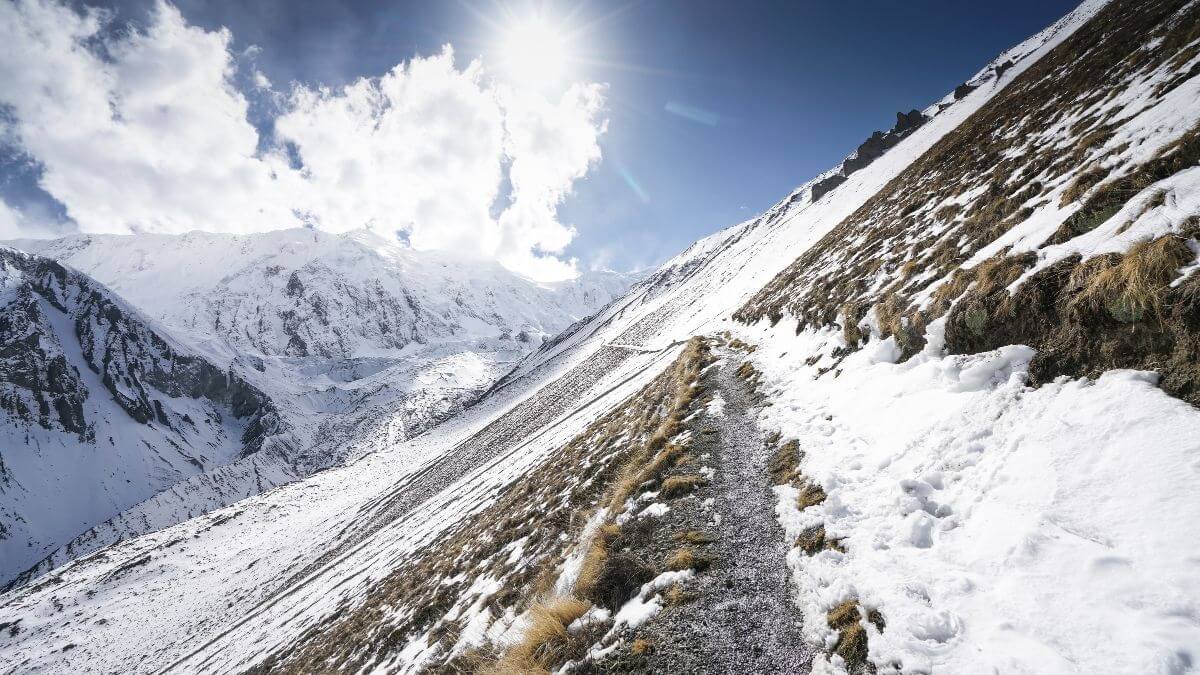
Planning for seasonal variations helps you prepare clothing, gear, and daily distances safely. Knowing what to expect at different altitudes and trail conditions allows you to avoid delays and enjoy the trek comfortably.
For a detailed guide on timing your trek for the best conditions, check out our best time for Annapurna Trek.
Accommodations and Food on the Trail
Teahouses along the Annapurna Circuit offer basic but comfortable lodging and meals. Knowing what to expect helps you plan for rest, hydration, and nutrition, which are essential for keeping energy levels up during long trekking days.
What Teahouses Offer
- Rooms and facilities: Simple rooms with shared bathrooms are common; some higher-altitude stops may be very basic.
- Charging and hot water: Available in most teahouses for a small fee, usually powered by solar panels.
- Beds and blankets: Warm bedding is generally provided, but bringing a sleeping bag liner is recommended.
Food and Hydration
- Typical meals: Dal bhat (rice and lentils), noodles, soups, and omelets are common.
- Hydration: Carry a refillable water bottle and use purification tablets or filters as staying hydrated is critical at high altitude.
Nutrition at High-Altitude
- Energy needs: On long walking days, you need meals that give you lots of energy, like foods with carbs, protein, and fat.
- Foods to avoid: Don’t eat super greasy food or too much sugar because it can upset your stomach.
Altitude and Safety Preparation
High altitude and tough trails make safety really important for the Annapurna Circuit Trek. Knowing about altitude sickness, how to get used to high places, and safety rules helps prevent health problems and makes the trek smoother.
Understanding Altitude Sickness
- Symptoms to watch: Headache, nausea, dizziness, shortness of breath, and loss of appetite.
- When to stop or descend: Severe or persistent symptoms require immediate rest or descent to a lower altitude.
Acclimatization Practices
- Recommended schedule: Include rest or short acclimatization days every 2–3 days or after major altitude gains.
- Rest days: Take extra breaks at higher settlements to adjust gradually to thinner air.
Safety Routines
- Hydration: Keep drinking water often, even if you’re not thirsty, to help your body handle the high altitude.
- Pacing: Go slow and steady when walking uphill for a long time so you don’t get too tired.
- Sun protection: Sunglasses, sunscreen, and a hat are a must because the sun is really strong up high.
Emergency Support
- Availability: Major settlements have small clinics or teahouses with first aid.
- Communication: Keep emergency contacts and insurance info handy; some areas have limited phone coverage.
- Evacuation options: Helicopter evacuation is possible but costly—plan accordingly.
Permits and Required Documents
Before starting the Annapurna Circuit trek, you need to have the right permits. Bringing the correct papers lets you legally enter the trail and the Annapurna Conservation Area and also helps keep you safe if any problems happen.
Mandatory Permits
- TIMS Card (Trekkers’ Information Management System): Required for all trekkers in Nepal, this card helps authorities track trekkers and provide assistance if needed.
- ACAP (Annapurna Conservation Area Permit): Needed to enter the Annapurna Conservation Area; fees support conservation efforts and local communities.
Where to Obtain Them
- Offices in Kathmandu and Pokhara: Both permits can be obtained at dedicated offices before starting your trek.
- Documents required: Passport and passport-sized photos are typically needed.
For a complete guide on all trekking paperwork, check out our Annapurna Circuit Trek permits blog.
What to Carry on the Trek
- Passport copies: Keep a photocopy separate from the original in case of loss.
- Insurance details and emergency contacts: Essential for medical emergencies and rescue support.
Choosing the Right Itinerary
Selecting the right Annapurna Circuit Trek route and schedule for your trek is an important part of Annapurna Circuit Trek Preparation. Your fitness, available days, and interest in side trips all influence which itinerary will give you the best experience.
Standard Route Options
- Classic circuit overview: The full Annapurna Circuit usually takes 15–18 days, covering the entire loop from Besisahar or Bhulbhule to Jomsom or Pokhara.
- Shorter versions: Many trekkers opt for 10 to 12-day itineraries, skipping lower sections or side valleys for time constraints.
Popular Side Trips
- Tilicho Lake: Adds 1 - 2 days, with stunning high-altitude scenery.
- Nar-Phu Valley: Adds 3–4 days, with remote Tibetan-style villages and dramatic mountain landscapes.
- Poon Hill (via Chame detour): Adds 1–2 days, a famous sunrise viewpoint for Annapurna and Dhaulagiri ranges.
- Ice Lake & Gangapurna Glacier: Adds 1–2 days, with glacial lakes and close-up views of Gangapurna and Annapurna III.
Guided vs Independent Trekking
Deciding whether to trek independently or hire a guide and porter is a key part of Annapurna Circuit Trek Preparation. Each approach has benefits, and understanding them helps you choose the safest and most enjoyable option for your skill level and goals.
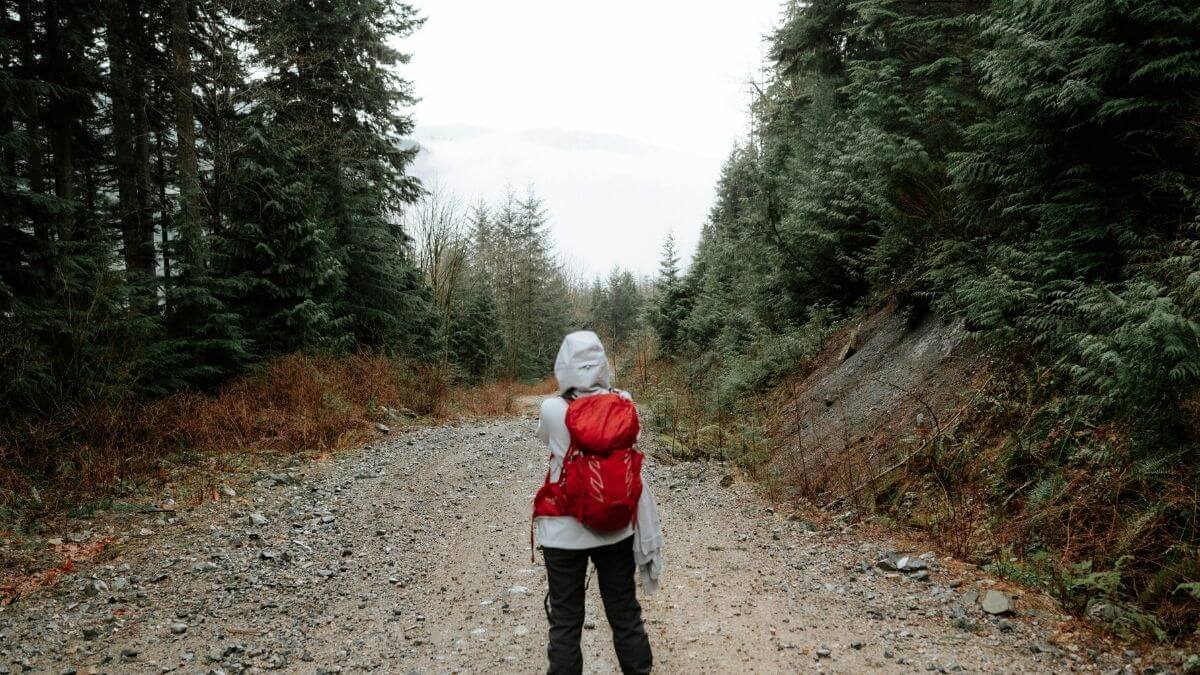
Benefits of Hiring a Guide or Porter
- Safety: Guides know the trails, altitude problems, and local conditions, which helps stop accidents.
- Navigation: They help you not get lost in parts of the circuit that aren’t well-marked.
- Support: Porters can carry your heavy stuff, so you can focus on walking and getting used to the altitude.
Who should trek independently
- Experienced hikers: People who are good at finding their way, handling high altitudes, and dealing with weather.
- Self-sufficient travelers: People who can take care of their gear, meals, and small problems by themselves.
Book with Abound Holidays
Planning your Annapurna Circuit trek is much easier when you have experienced local support. Abound Holidays offers fully tailored itineraries that can match your fitness, schedule, and interests, ensuring you get the most out of your trek without worrying about logistics. Our safety-focused local guides provide expertise in altitude management, trail navigation, and cultural insights, giving you confidence on every step of the journey.
With flexible dates and personalized trip planning, you can start your trek when it suits you best and make adjustments according to your preferences. Let our team handle transport, permits, and other arrangements so you can enjoy a smooth and well-prepared Annapurna Circuit experience.
Contact us to plan your Annapurna Circuit trek and begin your adventure with peace of mind.
FAQs
How long should I train for the Annapurna Circuit Trek?
A minimum of 8–12 weeks of regular cardiovascular, strength, and endurance training is recommended. Gradually increasing your hiking distance and elevation prepares your body for long trekking days.
What is the best month to start the Annapurna Circuit?
The ideal months are March–May (spring) and September–November (autumn), when the weather is clear, temperatures are moderate, and trails are safest.
Do I need previous trekking experience?
While prior trekking experience helps, beginners can also attempt the circuit if adequately trained and willing to follow acclimatization schedules.
What is the ideal backpack weight?
For comfort and endurance, aim to keep your backpack around 8–12 kg, carrying only essential items and leaving bulky gear for rental if needed.
What gear is essential for Thorong La Pass?
Layered clothing for extreme cold, sturdy trekking boots, trekking poles, gloves, a hat, and a sleeping bag suitable for sub-zero temperatures are critical.
Can I complete the Annapurna Circuit without a guide?
Experienced trekkers with good navigation skills can trek independently, but hiring the Annapurna Circuit Trek guide enhances safety, local insights, and emergency support.
How do I prevent altitude sickness on this trek?
Ascend gradually, include rest or acclimatization days, stay hydrated, avoid alcohol, and be aware of symptoms. Descend if symptoms worsen.
What should I not pack for the Annapurna Circuit?
Avoid unnecessary heavy items, non-essential electronics, and too much casual clothing; focus on functional trekking gear and essentials.


 based on 5 reviews
based on 5 reviews
